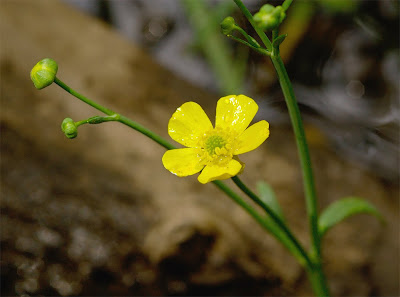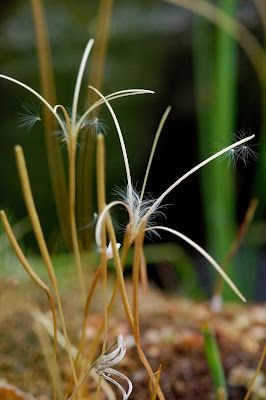Just a short walk today, from Duntocher to the Test marsh (South of the Greenside Reservoir).
In the damp cloudy weather, butterflies clung sluggishly to the wet vegetation. I encountered Ringlets, Common Blues and Meadow Browns at Little Round Top.
In the damp cloudy weather, butterflies clung sluggishly to the wet vegetation. I encountered Ringlets, Common Blues and Meadow Browns at Little Round Top.
 |
| Meadow Brown (Maniola jurtina) mating pair |
 |
| Elderberry (Sambucus nigra) |
 |
| Elderberry (Sambucus nigra) |
The foamy umbels of creamy-white Elderberry flowers have a musky, fusty aroma.
Elderflower Cordial Recipes:
The British Larder - Elderflower Cordial Recipe
Fuss Free Flavours - Elderflower Cordial Recipe
Food.com - Old Fashioned Elderflower Cordial Recipe
I found Lesser Spearwort growing in the pond at Little Round Top:
Elderflower Cordial Recipes:
The British Larder - Elderflower Cordial Recipe
Fuss Free Flavours - Elderflower Cordial Recipe
Food.com - Old Fashioned Elderflower Cordial Recipe
I found Lesser Spearwort growing in the pond at Little Round Top:
 |
| Lesser Spearwort (Ranunculus flammula) |
 |
Lesser Spearwort (Ranunculus flammula)
|
 |
| Unknown species of Liverwort (at Test) |
Lesser Spearwort is a buttercup of watery habitats - the flowers are indistinguishable from other Ranunculus species but the long, undivided, strap-like leaves are very distinctive.
I found a male Gold Swift (Hepialus hecta) above Little Round Top.
Between Little Round Top wood and the Test I saw a flock of Linnets and a lone Peregrine Falcon (which flew in the direction of the Mohican Woods).
I found a male Gold Swift (Hepialus hecta) above Little Round Top.
Between Little Round Top wood and the Test I saw a flock of Linnets and a lone Peregrine Falcon (which flew in the direction of the Mohican Woods).
In the moorland above the Test, large grey slabs of exposed underlying rock are thinly covered with mosses and stonecrops, interspersed with small patches of bog and crisscrossed with crumbling old dry-stone walls.
Much of the heather had withered away to bare bleached-bone stems with beautifully knotted and twisted branches - weather-beaten to resemble driftwood.
I looked for Slow Worms (unsuccessfully) and Common Lizards (I caught a pregnant female).
At the Northern end of the Test I found a small pile of feathers; a Sparrowhawk kill; possibly the remains of a Whinchat or Stonechat.
Much of the heather had withered away to bare bleached-bone stems with beautifully knotted and twisted branches - weather-beaten to resemble driftwood.
I looked for Slow Worms (unsuccessfully) and Common Lizards (I caught a pregnant female).
At the Northern end of the Test I found a small pile of feathers; a Sparrowhawk kill; possibly the remains of a Whinchat or Stonechat.
 |
| New Zealand Willowherb (Epilobium brunnescens) |
New Zealand Willowherb is now naturalized over most of the Kilpatrick Hills. This tiny unobtrusive species has creeping stems, circular leaves and pale pink flowers borne on the tips of long reddish seed pods, which split to release downy wind-dispersed seeds.





No comments:
Post a Comment